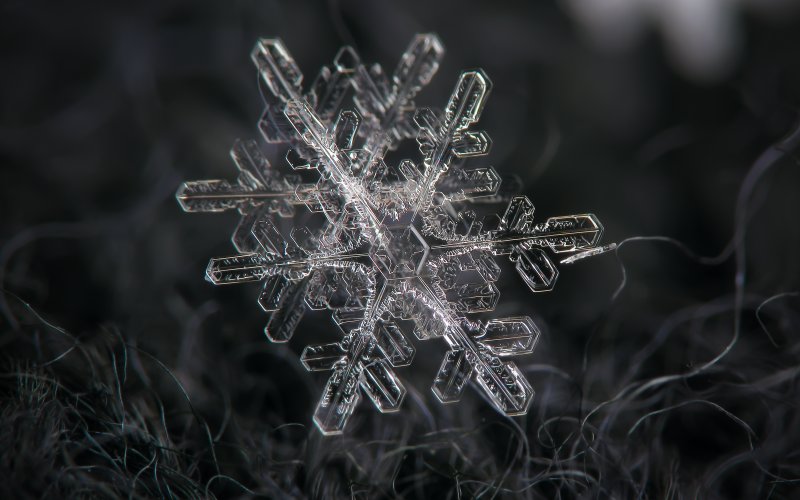There cannot be two identical snowflakes. But what if two flakes were allowed to crystallize in the laboratory, under exactly the same conditions. Would they be the same or not?
I wouldn’t say two identical snowflakes can’t exist — it’s rather unlikely. There are about 10,000,000,000,000,000,000 ice crystals in a snowflake that randomly coalesce when the snowflake is formed. That’s 100,000 times more than the stars in our galaxy or 10 times more than all people’s hair on our planet. We probably know that on different days it is not possible to simply arrange the hair of all people in the same way. So it’s similar for snowflakes — finding two identical snowflakes is very unlikely. In reality, the growth of a snowflake is affected by external influences (humidity, air flow, pressure, presence of impurities) and therefore the snowflakes differ from each other. If we were able to manipulate individual ice crystals, it would be possible to produce identical snowflakes. The basic ice crystalline cell consists of 8 atoms. In 1989, the people at IBM managed to manipulate individual atoms (although under special conditions and not with water atoms), but since then we have been working more and more with atoms. The use of this manipulation is only applied in the field of technology (e.g. chips) and not to the production of identical snowflakes. But in principle, in my opinion, nothing prevents the same snowflakes from being produced. There’s just a question about how much it would cost.
Want to ask something?
Send us an e-mail with the subject “Physics mysteries” to the address:
We can't wait to tackle your interesting questions!





